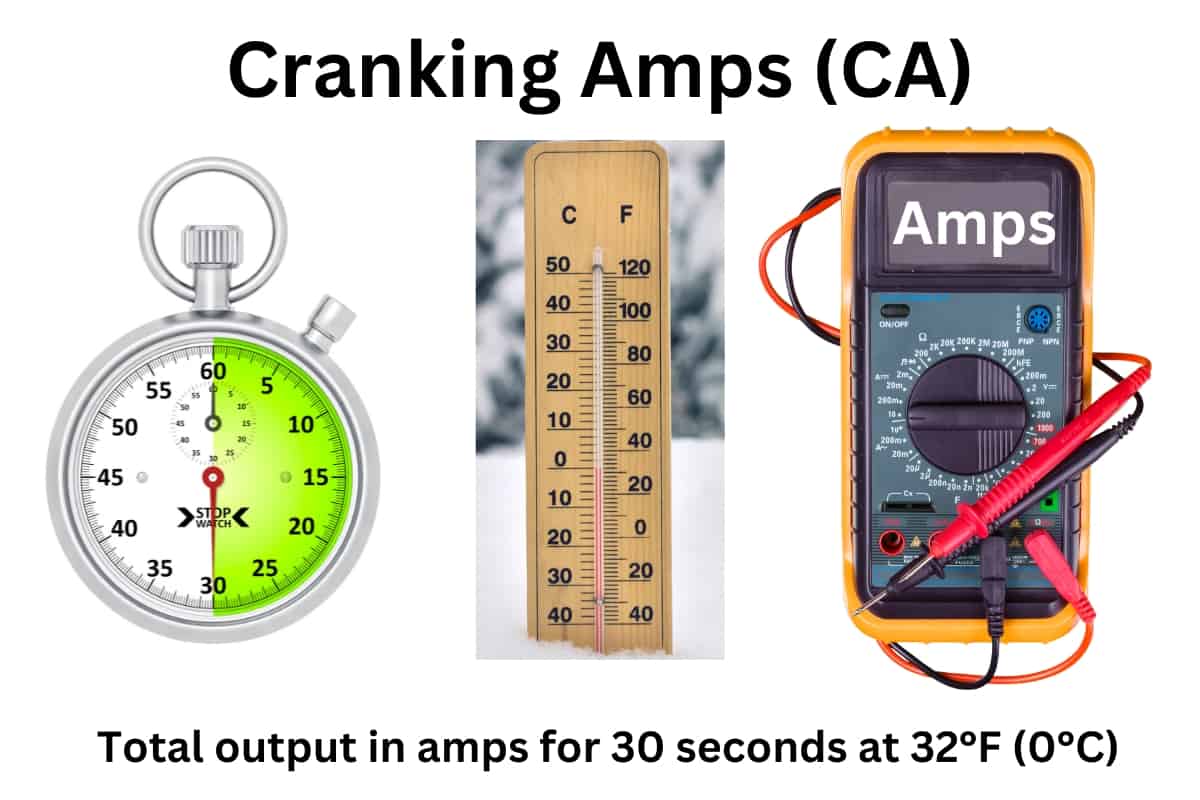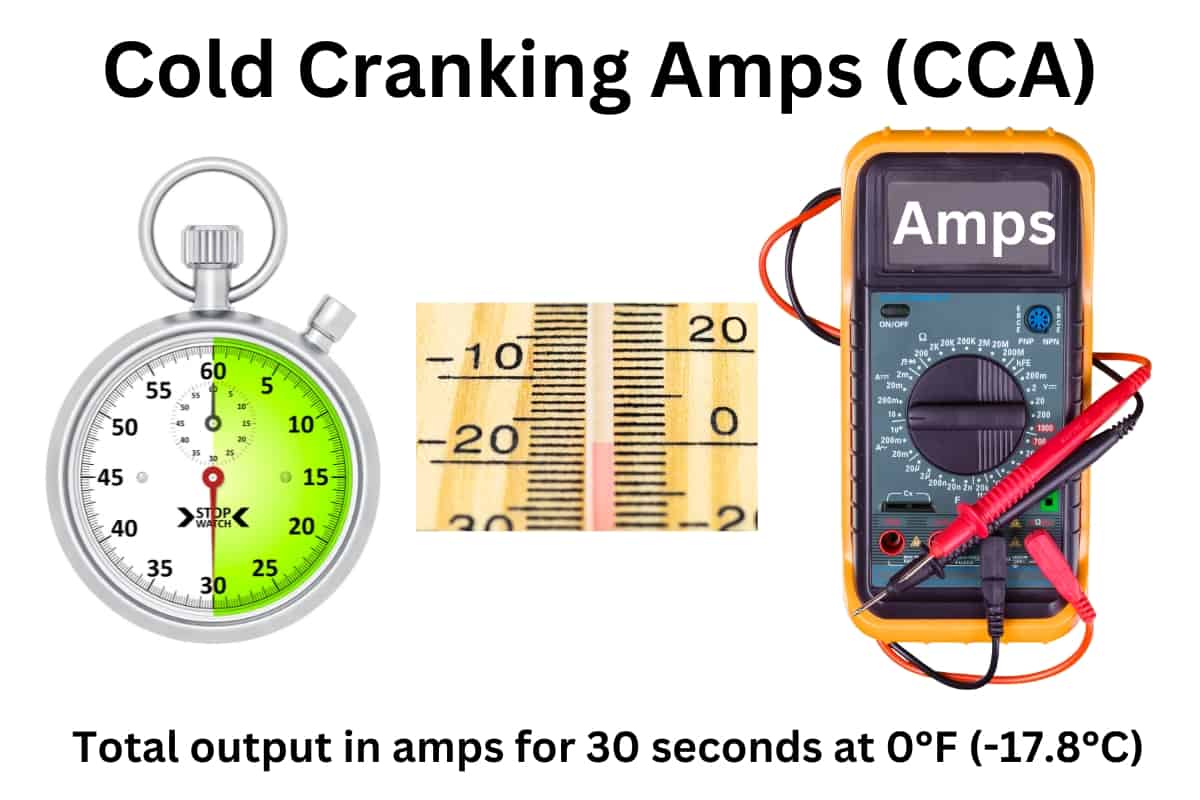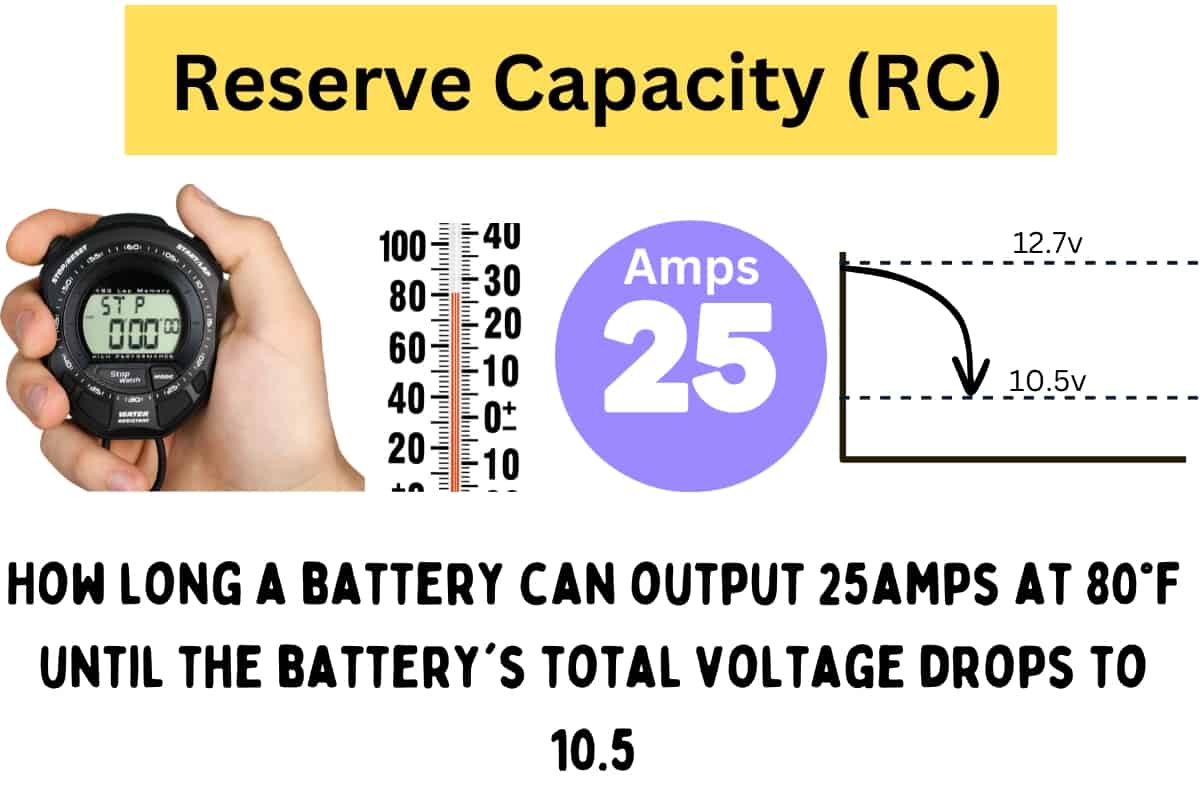If you’re in need of a new car battery, it can be easy to become a little intimidated by all of the numbers and abbreviations on the sticker at the top. Abbreviations such as CA, CCA, RC, and Ah are the most common.
Let’s take a quick look at what these stand for, what they mean, and why it matters to you.
What Does CA on a Car Battery Mean?
“CA” stands for cranking amps and is a measurement of how well your battery performs in moderate temperatures for engine starting purposes.
Cranking amps are the number of amps a battery can output for 30 seconds at 32°F (0° Celsius) while remaining at a usable voltage (generally 7.2v in this test).

Cranking amps are an indicator of how well your battery might perform at starting your engine in mild to slightly cold temperatures and is a measurement that should only be considered if you do not experience cold winters.
The rate at which electrons flow slows down dramatically the colder it gets, so relying on a measurement that tells you what a battery will do at 32°F is not applicable if you experience temperatures at 0°F.
That’s where CCA comes in.
What does CCA on a Car Battery Mean?
“CCA” stands for cold cranking amps and is a measurement of how well your battery performs in cold temperatures for engine starting purposes.
Cold cranking amps are the number of amps a battery can output for 30 seconds at 0°F (-17.8°C) while still maintaining a usable voltage (generally 7.2v).

If you experience winter temperatures that are regularly below 32°F, then you will want to rely on CCA ratings for your car battery selection.
When you turn your key, your battery has to power up all of the electronics on your car and also turn the starter for your engine. The starter has to work extremely hard in winter temperatures as the oil thickens in the engine and moving parts are harder to move.
Consult your vehicles manual to see the recommended CCA for your particular engine in winter temperatures.
What Does RC on a Car Battery Mean?
“RC” stands for reserve capacity and is a measurement of how long a battery can output 25 amps at 80°F (26.7°C) before the total voltage drops below 10.5 volts.

Essentially, this is a measurement of how long your battery can last with a fairly heavy load being placed on it and without being recharged by the alternator when driving.
Reserve capacity is important for two reasons.
- It gives you an idea of how long you might be able to drive before your battery would die in the event that your alternator stopped working
- It gives you an idea of how well your battery will combat parasitic draw when the engine is turned off and the vehicle is parked
Parasitic draw is all of the amperage that your car’s electronics use while they are in standby mode while your car’s key is removed from the ignition and the vehicle is parked. All of your sensors, anti-theft systems, etc.
These are never truly turned off unless you disconnect the battery, they are just in standby mode.
A normal range for parasitic draw is as low as 0.03 amps on older vehicles with fewer electronics and 0.085 for newer vehicles. Anything above that range should be inspected to see if there is a problem.
A car with a higher reserve capacity will be able to sit longer without being used and still start when you turn the key. A car with a smaller reserve capacity may not start if you don’t drive it often enough and your parasitic draw is too high.
What Does Ah on a Car Battery Mean?
It’s less common to see an “Ah” rating on a car battery. “Ah” stands for amp-hours (or ampere-hours) and is used to measure how long you could power something of a known amperage.
For example, in theory a 100Ah battery would be able to provide 1 amp for 100 hours, 2 amps for 50 hours, 5 amps for 20 hours, 10 amps for 10 hours, etc.
Car batteries are SLI batteries (starting, lighting, and ignition) and are internally engineered to be used for short bursts of very high current to turn your engine over. They were not designed to be used for powering a TV or other electronics while the car is not in use. Car batteries are not a deep-cycle batteries like those found in golf carts or boats.
Using a car battery for deep-cycle applications will kill your battery after a dozen or so deep discharges, whereas a marine or golf cart battery could get hundreds. The internal construction is just different and purposefully so.
Likewise, a deep-cycle battery is not ideal for trying to turn over an engine.
While the Ah of a car battery is nice to know, it should only be used in the same way we would use the reserve capacity measurements — to determine how well the car might deal with parasitic draw and how long the vehicle might run if the alternator were to stop working.
You should not be using the Ah of a car battery to determine how long you can power a TV in a power outage with an inverter. It is best to get a dedicated marine or golf-cart batteries for that application.
